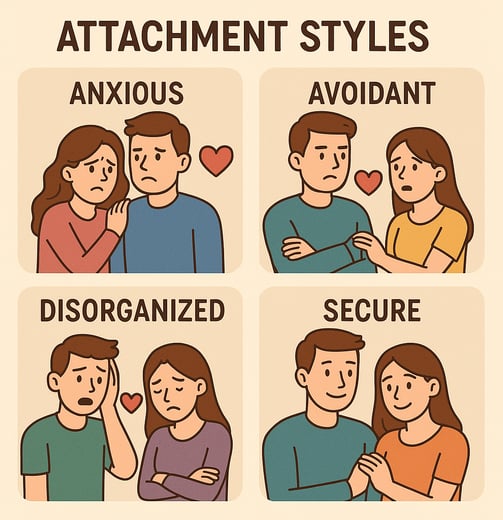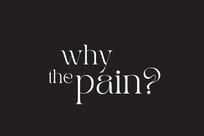Can Hypnotherapy Help Anxious-Avoidant Attachment?
Rewire the patterns. Reclaim connection. Rewrite your attachment story.
CONVERSATIONAL HYPNOTHERAPY
Jamie Lisa, MSc Candidate
1/20/20253 min read


If you’ve ever felt like your relationships follow the same painful script, like if you cling too tightly, pull away too fast, or cycle between both, you may be experiencing the effects of your attachment style. There are 4 types of attachment styles:
Anxious attachment
Avoidant attachment
Disorganized attachment
Secure attachment
What Are the Main Attachment Styles?
There are four commonly recognized attachment styles:
1. Secure Attachment
People with secure attachment tend to feel comfortable with closeness and independence. They trust easily, communicate openly, and maintain emotional balance in relationships.
2. Anxious Attachment
This style is marked by fear of abandonment, emotional highs and lows, and a strong need for reassurance. Anxious types may overthink texts, feel “too much,” or struggle to self-soothe.
3. Avoidant Attachment
Avoidant types value independence and often pull away when things feel emotionally intense. They may struggle with vulnerability, minimize their needs, or feel overwhelmed by closeness.
4. Disorganized Attachment
Also known as fearful-avoidant, this style is a mix of anxious and avoidant traits. Disorganized types crave love but fear being hurt. Relationships often feel unsafe or confusing.
Attachment styles are patterns of relating that develop in early childhood and show up in how we connect, trust, and respond to intimacy as adults. The good news? These patterns aren’t fixed. And hypnotherapy offers a powerful, gentle way to change them from the inside out.
How Hypnotherapy Helps with Attachment Styles
Attachment wounds are stored in the subconscious mind and nervous system, not just in thoughts. That’s why insight alone isn’t enough. You might know you’re repeating a pattern but still feel powerless to stop it.
Hypnotherapy works at the root, gently guiding you into a relaxed, focused state where deeper change can happen. Here's how it helps:
1. Accessing Core Beliefs
Most attachment patterns come from early experiences where needs weren’t consistently met. Hypnotherapy helps uncover these early emotional memories and the beliefs they created, like “I’m not enough,” or “Love isn’t safe.”
2. Rewriting Old Scripts
Through suggestion, imagery, and somatic processing, hypnotherapy helps you install new emotional templates. You begin to experience what secure connection feels like, from the inside out.
3. Working with Inner Parts
Many people carry conflicting voices: a child who wants love, a protector who pushes it away. Hypnotherapy makes space for all these parts to be seen, heard, and integrated, without judgment.
4. Creating Nervous System Safety
Attachment work isn’t just emotional, it’s physical. Hypnosis calms the fight-flight-freeze response, helping your body feel safe enough to connect.
Who Is It For?
Hypnotherapy can support people with all attachment styles:
Anxious types learn to self-regulate and feel secure without constant reassurance.
Avoidant types safely reconnect with their emotional needs and capacity for intimacy.
Disorganized types develop clarity and consistency in their relational patterns.
Even secure types can benefit by strengthening emotional resilience and communication.
What to Expect in a Session
Every session is tailored, but you might experience:
Guided visualization and imagery
Inner child or parts-based work
Somatic awareness and nervous system regulation
Therapeutic storytelling and reframing
Calm, non-invasive dialogue with subconscious beliefs
You're always awake, aware, and in control. Hypnotherapy is collaborative, not controlling.
Final Thoughts
Your attachment style isn’t your fault. It was shaped by early environments, not personal failure. But you can change it with the right support.
Hypnotherapy bridges the gap between insight and embodiment, offering a safe, compassionate space to update your relational blueprint.
If you're tired of anxious spirals, emotional walls, or confusing push-pull dynamics, it’s possible to create new patterns that are rooted in trust, connection, and peace.
Ready to Begin?
At Why the Pain, we work with people navigating attachment wounds to help them rewrite old patterns and build secure, satisfying relationships, starting with themselves.
Book a consult or explore our services to begin your healing journey today.
Get In Touch
Transform pain into clarity and self-understanding.
hello@whythepain.org
+1 203 465 3618
+65 9765 8020
+63 969 596 5060
© 2025. All rights reserved.
*1 North Bridge Road, #08-08
Singapore 179094
*49 5th Ave
Brooklyn 11217
New York
*Therapy may be conducted at a separate location from our business address.
Contact
Get Email Notified Whenever We Post
We may roll out bonuses and freebies from time to time.
You may also contact us at the following:

